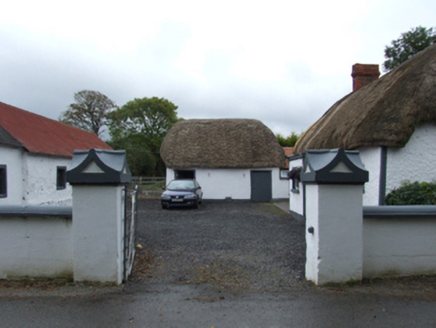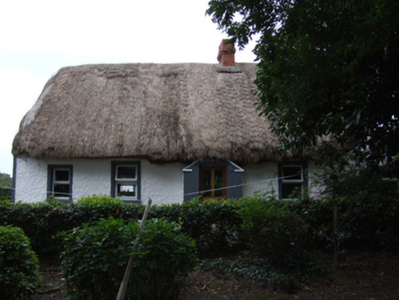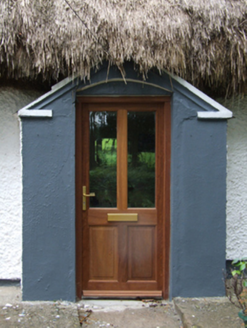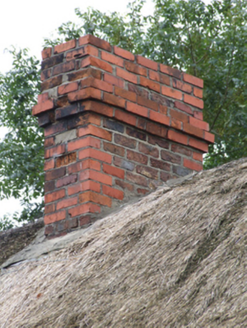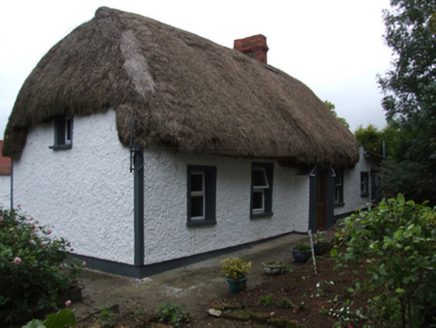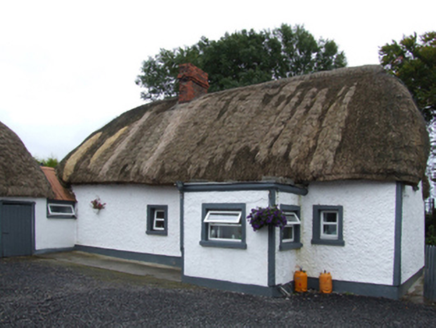Survey Data
Reg No
15703247
Rating
Regional
Categories of Special Interest
Architectural, Social
Original Use
Farm house
In Use As
Farm house
Date
1700 - 1840
Coordinates
302262, 130564
Date Recorded
29/09/2007
Date Updated
--/--/--
Description
Detached four-bay single-storey lobby entry thatched farmhouse with dormer attic, extant 1840, on a rectangular plan off-centred on single-bay single-storey gabled windbreak. Refenestrated, ----. Part chicken wire-covered hipped oat thatch roof with exposed wire stretchers to degraded ridge having exposed scallops, red brick Running bond off-central chimney stack having corbelled stepped stringcourse below capping, and part exposed wire stretchers to eaves having exposed scallops. Roughcast battered walls bellcast over rendered plinth with rendered "bas-relief" strips to corners. Square-headed off-central door opening in camber- or segmental-headed recess with concealed dressings framing replacement glazed timber panelled door. Square-headed window openings with concrete or rendered sills, and rendered "bas-relief" surrounds framing replacement uPVC casement windows replacing six-over-six (west) or two-over-two (east) timber sash windows having part exposed sash boxes. Set in landscaped grounds perpendicular to road with rendered piers to perimeter having roll moulded gabled capping supporting wrought iron-detailed flat iron gate.
Appraisal
A farmhouse identified as an integral component of the vernacular heritage of County Wexford by such attributes as the alignment perpendicular to the road; the rectilinear lobby entry plan form off-centred on a characteristic windbreak; the construction in unrefined local materials displaying a battered silhouette with sections of "daub" or mud suggested by an entry in the "House and Building Return" Form of the National Census (NA 1901; NA 1911); the somewhat disproportionate bias of solid to void in the massing; and the high pitched roof showing an oat thatch finish. Having been well maintained, the elementary form and massing survive intact together with substantial quantities of the historic or original fabric: however, the introduction of replacement fittings to the openings has not had a beneficial impact on the external expression or integrity of the composition. Furthermore, adjacent thatched and "tin roofed" outbuildings (extant 1840) continue to contribute positively to the group and setting values of a neat self-contained ensemble making a pleasing visual statement in a sylvan street scene.
